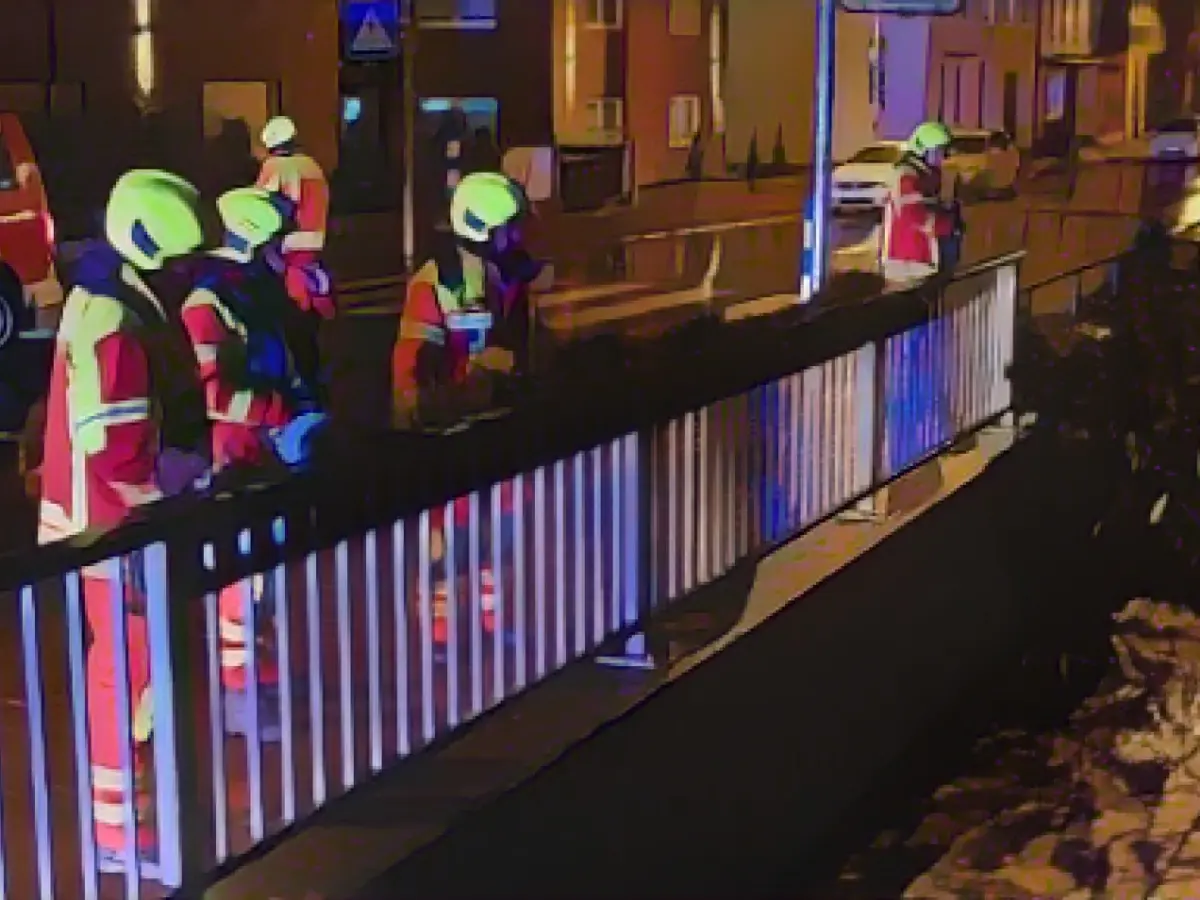Front Page: Flood Alert: Lower Saxony Braces for Submergence
Christmas Eve brought an abrupt worsening of the flood situation in numerous Lower Saxony regions. Alerts were issued for Rodenberg (Schaumburg district), Sarstedt (Hildesheim district), and Hann. Münden (Göttingen district). Emergency services worked tirelessly, deploying sandbags in attempts to contain the onslaught. The German Weather Service (DWD) warned of inclement weather, particularly in the Harz Mountains, where gale-force winds threatened the Brocken peak. The Göttingen district expected peak river levels throughout the holiday season.
"We're facing a wet phase, the rain won't cease anytime soon," stated a DWD spokesperson on December 25th. High flood potential persisted in Lower Saxony; many areas faced medium or significant submergence. After the storm depression "Zoltan" and approaching low-pressure systems from the Atlantic, consistent precipitation continued, with a chance of stronger showers late Tuesday and Wednesday night. New rainfall was anticipated on Wednesday.
Thirty gauges reported exceeding their warning levels on Sunday morning in Lower Saxony, according to the NLWKN Water Management, Coastal Defence and Nature Conservation Agency. Rivers like Weser, Aller, Leine, and Oker surpassed these thresholds. At level three, flooding of properties, larger areas, and infrastructure, including roads and cellars, became imminent.
Protective measures in Rodenberg (Schaumburg district) included vigilance from fire departments and volunteers, who fortified vulnerable areas with sandbags. Mayor Thomas Wolf reported that the inundation had breached the weir, prompting helpers to warn residents door-to-door and sound sirens for safety notifications. Over 300 emergency personnel were present, with contributions from both the fire department and the technical relief organization. Echoing similar sentiments, Mayor Wolf stated that the municipality hadn't witnessed such flooding in a quarter of a century.
Sarstedt (Hildesheim district) prepared itself against the pressure on the Innerste. "Water levels on Leine and Innerste are quite high," Mayor Heike Brennecke (SPD) informed the German Press Agency. The Innerste, a tributary connecting to the Leine at the small town, was experiencing significant pressure due to the rising water levels. The retention basins were nearly at capacity, however, indicating satisfactory management.
A mobile flood protection mechanism was employed for the first time in this scenario: "Its performance was terrific, it saved countless sandbags," explained an official. Additional pumps and sandbags were produced to support neighboring communities, as the system proved insufficient to handle the deluge.
Aerial photographs displayed the flooding of fields in the Leinemasch south of Hanover. The situation gradually improved in Hildesheim. Fire departments remained occupied, dealing with water damage and tree removal. In the past 24 hours, firefighters had been called out to 52 incidents in the city, according to the fire department.
Lehrte's rainwater retention basins were further filled to capacity, and some locations overflowed. Authorities encouraged residents to contribute by helping secure their own properties and cellar entrances.
Oldenburg's situation deteriorated, with retention basins in the Haaren-Wasseracht district unable to accommodate additional rainfall. The fire department appealed to nearby residents to fortify their homes and cellars, advising precautionary measures for flooding occurrences. Emergency services primarily focused on preventing immediate danger and urgently recommended avoiding paths along waterways during dangerous situations.
Battling against the floods, districts continued their preparations as the New Year approached. Residents and emergency services remained resilient in their efforts to confront the rising waters, generously contributing to the recovery efforts and hoping for a drier year ahead.
Source:
Context Limits Enrichment Integration:
- The inland flooding in Lower Saxony last winter 2023/24 was significant, with weeks of heavy rain coinciding with an active storm surge season, pushing drainage systems to their technical limits and causing large parts of northern Lower Saxony to be submerged.
- Climate change is predicted to intensify such unfavorable conditions, increasing winter precipitation by around 40% by the century's end and raising sea levels in the German Bight by 1.20 meters by 2100.
- Authorities emphasize the use of natural processes to combat flooding by integrating controlled flooding behind dykes, allowing sediment to settle and areas to grow. Buildings and infrastructure will need to be adapted to the water and new utilization concepts developed.
- Flood-prone areas require comprehensive, integrated approaches linking policy and planning areas, while considering various stakeholder interests and improving inland drainage systems.








